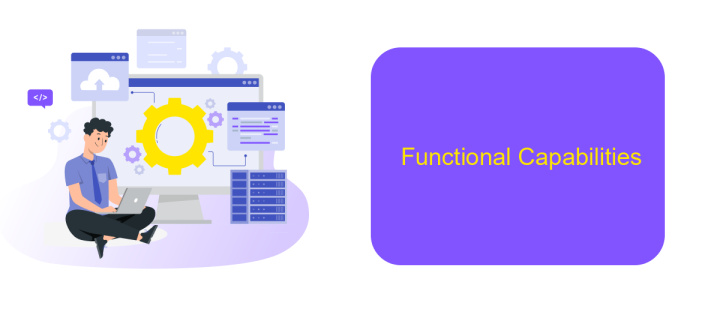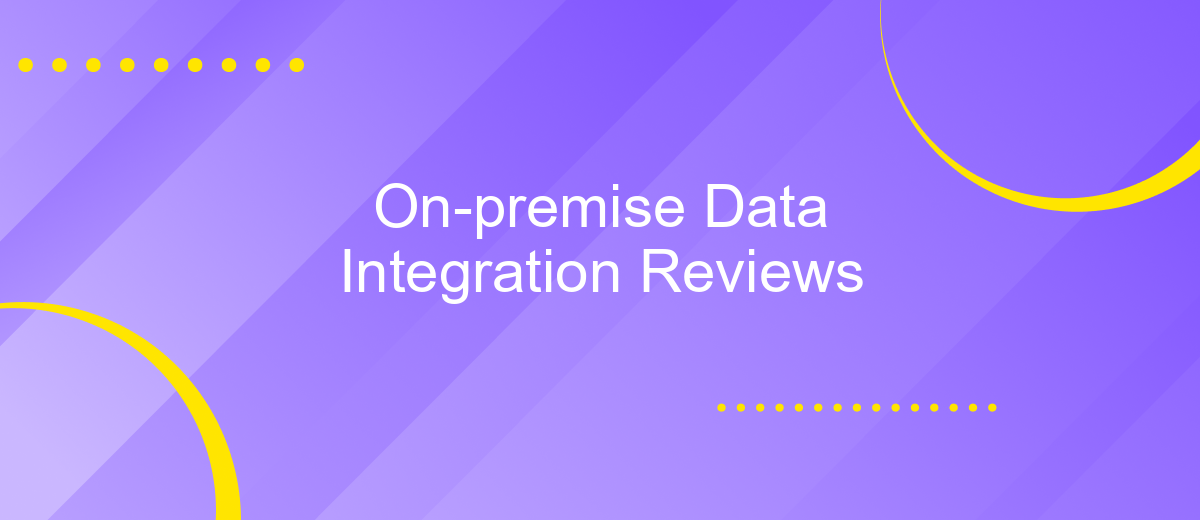On-premise Data Integration Reviews
In the ever-evolving landscape of data management, on-premise data integration remains a critical solution for many organizations. This article delves into comprehensive reviews of leading on-premise data integration tools, evaluating their features, performance, and usability. Whether you're a seasoned IT professional or a business leader, our insights aim to guide you in selecting the best tool for your needs.
Executive Summary
On-premise data integration is a critical component for organizations aiming to streamline their data processes while maintaining control over their data infrastructure. This review explores various on-premise data integration solutions, evaluating their effectiveness, ease of use, and scalability. Key aspects such as security, compliance, and cost-effectiveness are also considered to provide a comprehensive understanding of each solution's capabilities.
- Security: Ensures data protection and compliance with industry standards.
- Scalability: Supports growing data needs without compromising performance.
- Ease of Use: Simplifies the integration process for users with varying technical expertise.
- Cost-Effectiveness: Balances initial investment with long-term operational costs.
One notable service, ApiX-Drive, offers a seamless approach to data integration by providing an intuitive interface and robust features. It stands out for its ability to connect various applications and automate workflows, making it an excellent choice for businesses seeking efficient data management solutions. This review aims to guide organizations in selecting the most suitable on-premise data integration tool to meet their unique needs.
Product Overview

On-premise data integration solutions are critical for organizations seeking to manage and unify data from multiple sources within their own infrastructure. These solutions offer robust capabilities for data transformation, cleansing, and synchronization, ensuring that data is accurate and consistent across various systems. By maintaining control over data on-premise, companies can adhere to stringent security protocols and compliance requirements, making it an ideal choice for industries with sensitive information.
One of the notable tools in this domain is ApiX-Drive, which provides seamless integration services tailored to on-premise environments. ApiX-Drive facilitates the connection between disparate systems, automating data flows and reducing manual intervention. Its user-friendly interface allows for quick setup and configuration, enabling businesses to streamline their data processes efficiently. By leveraging ApiX-Drive, organizations can enhance their data integration strategies, ensuring real-time data availability and improved decision-making capabilities.
Implementation and Configuration

Implementing and configuring on-premise data integration solutions can be a complex task, but with the right approach, it can be streamlined. The first step involves understanding the specific needs of your organization and the data sources that need to be integrated. This includes assessing the volume of data, the type of data, and the frequency of data updates.
- Identify and document all data sources and destinations.
- Choose the appropriate integration tools and platforms, such as ApiX-Drive, which can help automate and simplify the integration process.
- Configure data mapping and transformation rules to ensure data consistency and accuracy.
- Set up data transfer schedules and monitor for any potential issues or bottlenecks.
- Test the integration thoroughly to ensure it meets the desired outcomes.
Once the initial setup is complete, ongoing maintenance and monitoring are crucial to ensure the integration remains efficient and effective. Tools like ApiX-Drive provide real-time monitoring and alerts, making it easier to manage and troubleshoot any issues that may arise. Regular updates and optimizations will help maintain the performance and reliability of your on-premise data integration solution.
Functional Capabilities

On-premise data integration solutions offer a range of functional capabilities that ensure seamless data management and workflow automation. These capabilities are essential for organizations seeking to maintain control over their data infrastructure while leveraging the advantages of integrated systems.
One of the key functional capabilities is the ability to connect multiple data sources and destinations, enabling the smooth transfer and synchronization of data across various platforms. This is particularly important for businesses that rely on diverse applications and databases to manage their operations.
- Data Transformation and Mapping
- Real-Time Data Integration
- Error Handling and Logging
- Scalability and Performance Optimization
- Security and Compliance Management
Services like ApiX-Drive provide robust tools for setting up and managing these integrations efficiently. With features like automated data workflows and real-time updates, ApiX-Drive enhances the functionality of on-premise data integration solutions, ensuring that businesses can maintain high levels of productivity and data accuracy.
- Automate the work of an online store or landing
- Empower through integration
- Don't spend money on programmers and integrators
- Save time by automating routine tasks
Pricing and Licensing
When it comes to pricing and licensing for on-premise data integration solutions, costs can vary significantly based on the complexity and scale of the deployment. Typically, these solutions require an initial investment in software licenses, which may be based on the number of users or the volume of data processed. Additionally, there may be ongoing maintenance and support fees to ensure the system remains up-to-date and functions smoothly. Some providers also offer tiered pricing models, allowing businesses to choose a plan that best fits their needs and budget.
For those seeking to streamline the integration process, services like ApiX-Drive can be invaluable. ApiX-Drive offers a flexible pricing model with various subscription plans tailored to different business sizes and integration requirements. This service simplifies the setup and management of data integrations, reducing the need for extensive in-house IT resources. By leveraging such tools, companies can achieve efficient data integration without the high costs typically associated with on-premise solutions, making it a cost-effective alternative for many organizations.
FAQ
What is on-premise data integration?
What are the benefits of on-premise data integration?
How can I ensure data security in on-premise data integration?
What challenges might I face with on-premise data integration?
Are there tools available to simplify on-premise data integration?
Time is the most valuable resource for business today. Almost half of it is wasted on routine tasks. Your employees are constantly forced to perform monotonous tasks that are difficult to classify as important and specialized. You can leave everything as it is by hiring additional employees, or you can automate most of the business processes using the ApiX-Drive online connector to get rid of unnecessary time and money expenses once and for all. The choice is yours!


